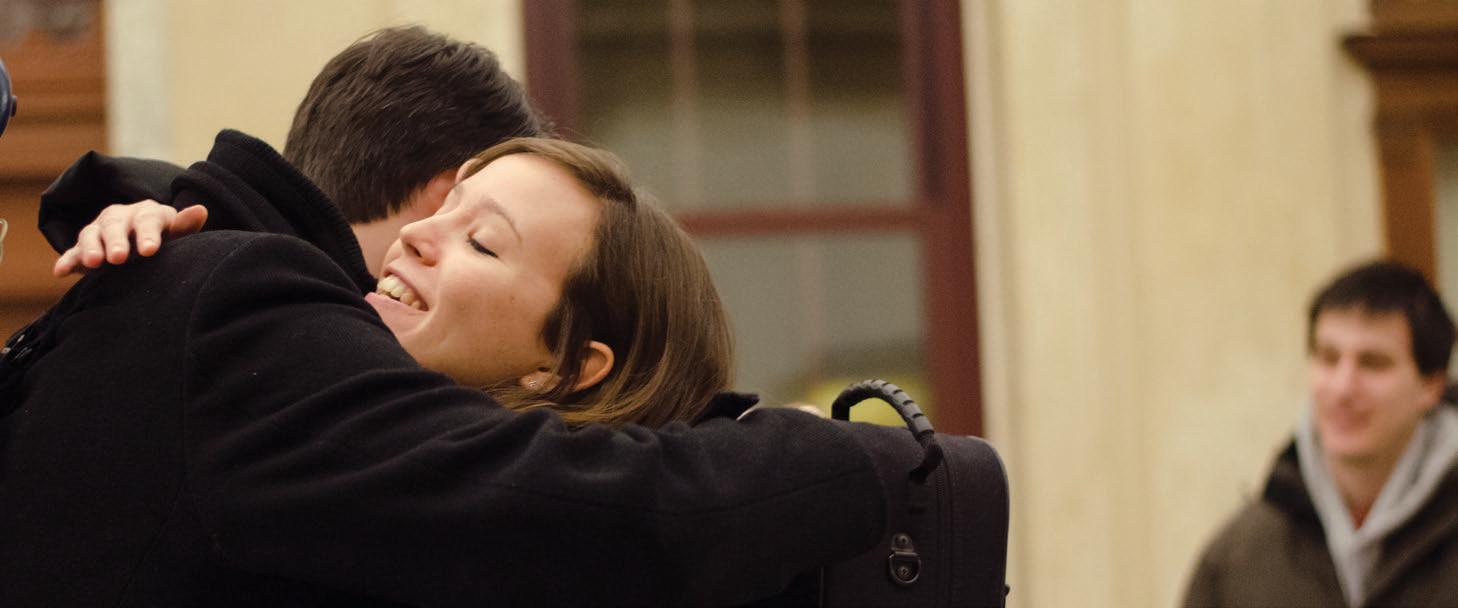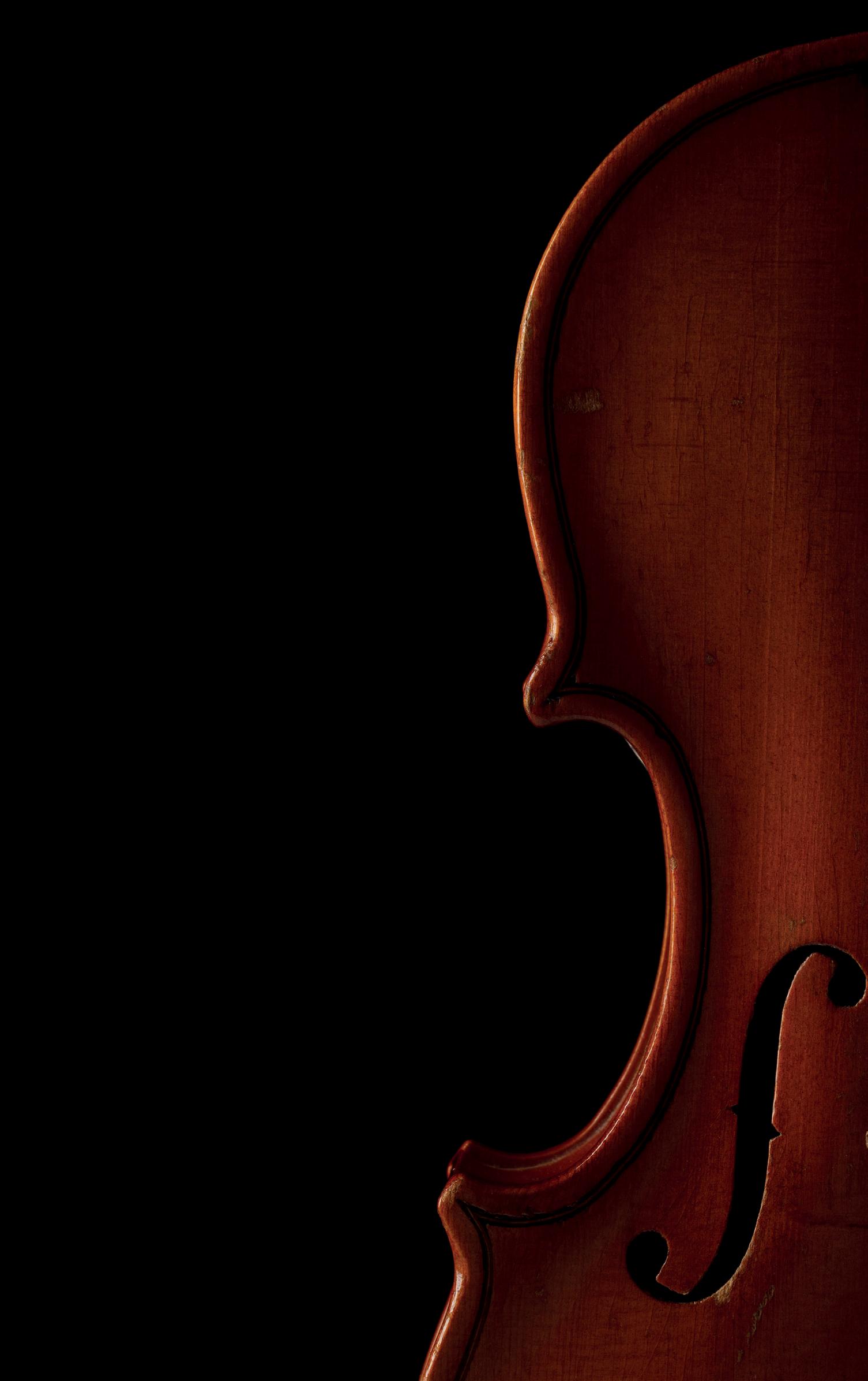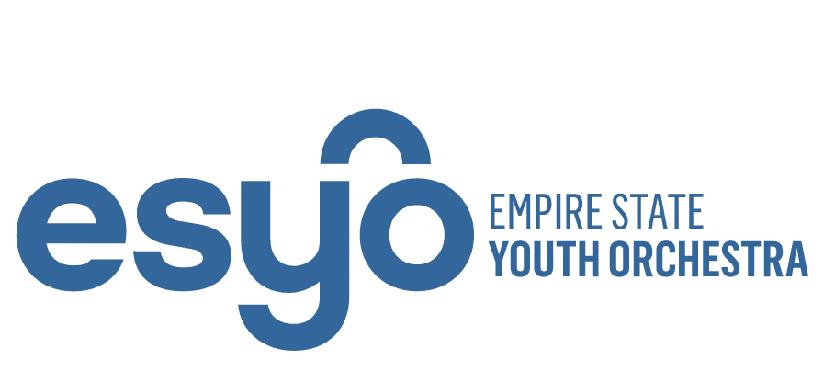





It is my pleasure to invite you to celebrate Empire State Youth Orchestra’s 43rd season of joyful music making. This year we are thrilled to return to a familiar pattern of rehearsals and performances, including perennial favorites such as the Frost Valley Retreat, Melodies of Christmas, the Young People's & Senior’s Concerts, and our signature, crowd-pleasing, Crossgates Mall Playathon. After two years of pandemic disruptions, it is wonderful to look forward to a more “normal” season packed with performances, enriching musical experiences, and opportunities to forge life-long friendships. And ESYO has much to anticipate. Outstanding conductors, teaching artists, and coaches working side-by-side with enthusiastic and talented young musicians to create wonderful, magical moments to share with our community. A thriving CHIME program, providing youth free music instruction and performance opportunities. A new cohort of Young Leaders, already mobilizing to apply their insight, expertise and innovation to accomplish great things. And beyond this season, we look forward to taking up residence in our new, “forever” home.

The quest for ESYO’s home began more than two decades ago. Past opportunities that were identified--like the Goldilocks tale--proved either too large, or too small, too costly, or simply too impractical. But the 8-acre campus at 45 Mac Arthur Drive, is "just right." Young musicians will be inspired by the creative space, graced with natural light and acoustically designed rehearsal rooms. Families will gather in lounge areas during rehearsals, enjoying conversation and building community. Our new home will allow us to expand our scope to include daytime programming for early learners, homeschool ensembles, accessible experiences for young people with disabilities, summer camps, as well as to develop extended day programming in partnership with local school districts.. These new offerings will help strengthen regional school music programs and introduce students to musical instruments at a younger age. Cooperative education programs, such as advanced theory, offered in partnership with Capital Region BOCES Arts in Education Initiative, will expand academic opportunities for young musicians interested in pursuing a career in music. To learn more, and follow our progress as we work to secure the resources to make this vision a reality, go to our website: https://esyo.org/news-concerts/esyo-center-formusical-youth
Yes, we do indeed have much to look forward to, not the least of which is celebrating together with you, our friend and supporter. Thank you for being here at this performance, cheering on our musical youth. Thank you for believing in the power of music to transform, to delight, to enrich and to inspire. Enjoy today, and come back again soon to hear us again!
Becky Calos Executive DirectorI would like to warmly welcome you to the 2022-2023 season, my first as Music Director. I'm so excited to embark on this journey together with the young musicians of ESYO and with all of you!
We live in challenging times and I believe that coming together to play music with urgency, to embrace vulnerability, to listen and explore the depths of emotions, is crucially important. It is through this experience that we create new connections and a sense of belonging. This season is about discovering new and meaningful connections - connections to nature, to ourselves, and to one another. Gabriella Smith's Field Guide, in Symphony Orchestra's opening concert, invites us to connect to nature through her music, and, later in the season, the Festival of Young Artists will feature music celebrating Earth. Music can connect us to our own nature, our bodies, for example in Ludwig Van Beethoven's 7th Symphony that centers around dance. And there will be more dancing when several of ESYO's ensembles connect and play together in joyful encore pieces that feature movement, for example in the joint concert of Repertory Orchestra, String Orchestra and Concertino Strings on November 13!
More connections: we are partnering with Rensselaer Polytechnic Institute to present a side-by-side performance at EMPAC in April, featuring a new music visualization tool called Music:Eyes - See what you Hear. And the young musicians at our free after-school program CHIME will create musical connections to their emotions and lived experience as part of a in a project called Amplify Our Voice. And we are excited to move to a new place of belonging, ESYO’s Center for Musical Youth. This new home will allow for many new connections and ways of making music together!
I'm also thrilled to launch MusicNOW, a multi-year endeavor that focuses on nourishing dimensions of music making that are often underdeveloped and that is grounded in the conviction that music can only come to life in the present—in the NOW! In a MusicNOW spirit, ESYO students develop excellence not only in playing their instruments but also in breathing and embodying music together, in telling musical-emotional stories collectively with a sparkle in the eye, in intently listening and relating to each other and in thinking and being expressive outside the box, in a spirit of improvisation and creation.
At the launch of MusicNOW, we had the great privilege to welcome Walter Thompson for a weeklong residency. Walter is the inventor of an innovative instant composing sign language called Soundpainting, which he introduced to our young musicians in ensemble rehearsals and at the fabulous Frost Valley Retreat. You will encounter Soundpainting in various shapes and forms throughout the season in performances and collaborative workshops!
Thank you for all the support you have given our young musicians over the years and I'm very much looking forward to celebrating this season with you!
Etienne Abelin Music Director and Conductor of the ESYO Symphony OrchestraOmar Williams
Board Chair
Barry Richman
Vice Chair
Heather Chan Secretary Dee Adkins
Treasurer
Rebecca Calos
Executive Director
Lisa Stulmaker
Finance Director
Sue Lascoe
Operations Director & Repertory Orchestra Manager
Anne-Marie Gorman Doyle Development Director
Etienne Abelin
Music Director & Symphony Orchestra
David Beck
Repertory Orchestra
Joseph Gumpper String Orchestra
Leo Milman
Concertino Strings
Dr. Robert S. Hansbrough Wind Orchestra
Robert Altman
Brian Axford
Robert Bengraff
Vic Bernstein
Randall Ellis Henk Elzenga
James Haertel
Stefon Harris
Dr. David Bebe
CHIME Conductor, Curriculum & Enrichment Coordinator
Andrea Restrepo
Operations Assistant, Librarian & Symphony and String Orchestra Manager
Zoë Auerbach CHIME & Young Leaders Director
Andrew LaCoppola
Kara Lais
Peter Lauricella
Caitlin Mochrie
Brian Quiara
Brian Sacawa
Chris Shiley Elizabeth Silver
Diana Chabai-Booker
Marketing & Publications Manager
Mary Rose Petrozola Membership Services Coordinator & Administrative Assistant
Richard Albagli
Youth Percussion Ensemble
Mark Foster Youth Percussion Ensemble
John Antonio
Repertory Percussion Ensemble Genoveffa Vitale Chamber Percussion Ensemble
Dr. Peter Bellino Youth Jazz Orchestra
Keith Pray
Repertory Jazz Orchestra
Julie Taylor
Concertino Wind Choir Scott Hopkins Concertino Brass Choir Rae Jean Teeter Concert Chorale Hannah Dick Concertino Percussion
Rossiluz Caceres
Site Manager
Lin Polster
Site Manager
Cathy Gatta
Lead Teacher
Monica Roach
Lead Teacher
Nikola Tomic
Lead Teacher
Lia Bourque-Mooney
Teaching Artist
Jessica Bowen
Teaching Artist
Aidan Doyle
Teaching Artist
Lydia Flynn
Teaching Artist
Teresa Gatta-Norton
Teaching Artist
Tara Hanish
Teaching Artist
Ye Hu Teaching Artist
Matthew Johnson
Teaching Artist
Cara Miner
Teaching Artist
Andrea Restrepo Teaching Artist
Bridie Schnore Teaching Artist Nick Smith Teaching Artist Aaron Zhang Teaching Artist
Throughout the season, ESYO Symphony and Repertory Orchestra members are coached and mentored by a group of dedicated musicians and teachers from the Capital Region and beyond. We are grateful to our team of coaches for offering their guidance and expertise, inspiring our youth to pursue musical excellence.
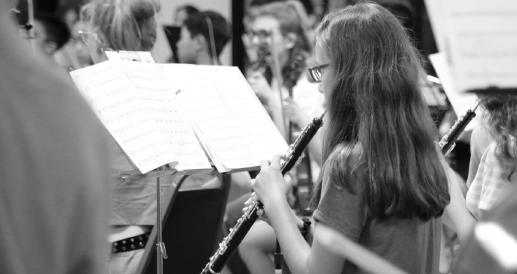
Matthew Johnson, Viola
Leo Milman, Violin
Natalya Milman, Violin
Jamecyn Morey, Violin
Hilary Cumming, Violin
Stephani Emery, Viola
Shelly Tramposh, Viola
Heather Braun-Bakker, Violin
Luke Baker, Bass
Dr. David Bebe, Cello
Andrea Restrepo, Cello & Bass
Andre O'Neil, Cello
Rachele Prawdzik, Cello
John Marshall, Bass
Patrick O'Connell, Bass
John Antonio, Percussion
Michael Blostein, Brass
Paul Riggio, Brass
Edward Marschilok, Woodwinds
Jaqueline Wright, Woodwinds
Susan Gierthy, Oboe
Julie Taylor, Clarinet Michelle McLoughlin, Bassoon
John Fatuzzo, Trumpet
Jessica Cunningham, Horn
MUSIC

Dr. David Bebe
Etienne Abelin
Jessica Belfower
Jamecyn Morey
Susan Gierthy



Sunday, October 30, 2022, 3:00PM

Giuseppe Verdi (Italy, 1813-1901)
FIELD GUIDE
Gabriella Smith (USA, 1991-)
SYMPHONY NO. 7 (in A Major, Op. 92)
I. Poco sostenuto – Vivace II. Allegretto
III. Presto – Assai meno presto IV. Allegro con brio
Ludwig van Beethoven (Germany, 1770-1827)
This performance is made possible in part by the generosity of
 Troy Savings Bank Music Hall
Troy Savings Bank Music Hall
Caitlin Weinheimer 1
Co-Concertmaster
Kai Vernooy 2 Co-Concertmaster
Tyler Jung 3 Co-Concertmaster
Gordon Amodeo
Darren Cheng Isabella Hu Fay Hu Eric Kim Abby Lee Sungwon Lee Arthur Leung Megan Lai Tiffany Ma Cael Sullivan Xuning Ying
Abby Mercier Principal Lillian Rogers Assistant Principal Sean Calhoun Chloe Dai Andrew Hwang Andrew Kim Yuni Kwon Nguyet-Vien Le Natasha Nugent William Vartuli Catherine Yang Emily Yang Iris Yang Lauren Zhu
VIOLAS
Yu-Heng Wang Principal Peyton Roach Assistant Principal Thomas Ahl Saurav Bavdekar Matthew Kenyon Cristiane Richardson Bowen Yu
Trey Coughlin Principal Hanh Nguyen Assistant Principal Bryan Chae Christina Cheng Emily Donohue Casey Gao
Ani Gregori Asadourian Ian Gu Adeline Hubbell Ian Jin
Kyle Markham Abigail Norsworthy Aman Patel Liam Sullivan Lucas Tong William Wu Vincent Zhang
DOUBLE BASS
Orin Carlson-Lee Principal Ariel Chen Assistant Principal Jaehyun Lee Kim Mazzacco
Emily Dupuis 1,3 Oona Isserles 2 Lucy Lee Renee Zhang
PICCOLO Oona Isserles 1
OBOES
Olivia Petti 2,3 Alicia Prieto 1 Andrew Watkins
CLARINETS
Regan Doherty Hailey Lotz 3 Julia Spretty 1,2
BASS CLARINET
Julia Spretty 3
BASSOONS
Aryeh Korevaar 1,2,3 Edward S. Marschilok*
CONTRABASSOON Edward S. Marschilok*
FRENCH HORNS
Winter Hubbell
Cyrus Joo-Schwaber Cole Martin 1,2,3 Mallorie Meyer* Joseph Viscio
TRUMPETS
Elyse Roepe John Fatuzzo*
TROMBONES
Kevin Lee 1 Nicholas Lynch Ronan Tiu 3 Anthony Zhang 2
TUBA Sarah Baker*
PERCUSSION
Clara de Long Thomas White
TIMPANI
William Lauricella
PRINCIPALS
Verdi 1 Beethoven 2 Smith 3 *Guest
I'm thrilled to welcome you to our opening concert in which Symphony Orchestra performs one of the greatest pieces of music ever written, Ludwig Van Beethoven's 7th Symphony. It's a work that Beethoven described as "the glory of light through darkness" and that celebrates dance, an expression of our own bodies that connects us with our own nature. The concert also features a fantastic piece by California-based composer environmentalist and composer Gabriella Smith called Field Guide, a musical safari into the natural world, specifically bird choruses at dawn. And Giuseppe Verdi's Nabucco Overture connects us to ourselves and each other through our ability to tell - sometimes dramatic! - stories. The concert also holds a few surprises: watch out for what a brilliant ESYO student and I will do in the middle of Smith's Field Guide, and listen to our percussion section embarking on an unexpected journey in the third movement of the Beethoven. Enjoy the concert and the fantastic program notes written by Yu-Heng Wang, a Senior at Shenendehowa High School and our Principal Violist!
-- Etienne Abelin, Music Director and Conductor of the ESYO Symphony OrchestraThe four-act opera Nabucco, composed in 1841, permanently established Italian composer Giuseppe Verdi’s reputation as an opera master, and placed him among the ranks of his contemporaries such as Rossini, Bellini, and Donizetti.
The opera narrates the Bible story of King Nebuchadnezzar of Babylonia (referred to as Nabucco in the opera) and his destruction of the Kingdom of Judah and persecution of Jews, but with a different twist.
The Israelites, under impending attack by King Nabucco, stand their ground, holding onto Nabucco’s daughter, Fenena, as a
captive in hopes of negotiation. However, the general guarding Fenena, Ishmael, falls in love with her, returning her to King Nabucco when he breaks into the city. With no leverage, Nabucco destroys the Hebrew Temple and imprisons all of the Israelites. Back in Babylon, Fenena becomes in charge of the city while Nabucco is away fighting. Her power-hungry half-sister Abigaille took the opportunity of Fenena freeing the Israelities to accuse her of treason and steal the throne. Just before she crowns herself however, Nabucco returns, seizes the crown from her, and proclaims that he is the God of the people. For his hubris, he is struck down by lightning, and turns insane. Abigaille, seeing Nabucco unable to think straight, successfully becomes the ruler of Babylon. She orders Fenena and all the Israelities to be killed, and forces the deranged Nabucco to sign orders for their execution. Watching Fenena and the Israelities being led to their demise, Nabucco prays to the Hebrew gods for forgiveness and his sanity is restored. He orders his armies to stop the execution before it could happen, and Abigaille, finding out all is lost, confesses her crimes and kills herself. Nabucco converts and frees the Israelities, and allows them to return to their homeland to rebuild their temple. In the end, the Israelities and Babylonians become united in worshiping God.
The overture highlights the notable parts of the opera, beginning with a grand brass chorale, a symbol of the staunch Hebrews in the face of impending doom and destruction of their faith. A loud orchestral tutti (all instruments together) signals the start of the epic plot. After an ominous chromatic passage, the music launches into a fast, dark, march-like tune, signaling the approaching army of King Nabucco. However, after a brief return of the brass chorale at the beginning, the music transitions into one of the most wellknown themes of opera history that is later presented in the work, when the Hebrews, in captivity under the Babylonians, mourn the loss of their temple in Jerusalem, the
“Va, Pensiro”, or frequently known as the Chorus of Hebrew Slaves. To highlight the importance of this passage, Verdi dedicated a significant amount of time developing this theme within the overture before the dark march tune returns again, signaling that all is not well, and that King Nabucco’s army is still upon the Israelities. The overture ends with a rousing conclusion.
In the past few years, I have become obsessed with making field recordings everywhere I go. It began with my desire to record the unfolding and trajectory of the dawn choruses I remember hearing every early Sunday morning as a teenager on the drive out to Point Reyes Bird Observatory where I would volunteer as a bird bander. It would always start just as we drove past Lagunitas Creek, about thirty minutes before sunrise, and we’d turn off the music and roll down the windows and let in the glorious cacophony and cold morning air. Since then I have recorded dawn choruses and many other natural and human-produced soundscapes around the world while backpacking in the Sierras, Cascades, and Andes, in temperate and tropical rainforest, in desert, in coastal scrub, in oceans, tide pools, bays, lakes, and glacial streams recording underwater sounds with my hydrophone, and in the streets and parks and subways of the cities I have spent time in. I envisioned Field Guide as a collage inspired by these various recordings and my improvisations with them on violin and voice and experiments processing them electronically. Many thanks to the Cabrillo Festival for commissioning this piece in honor of John Adams' 70th birthday. John, I dedicate this piece to you in celebration of your birthday and especially in gratitude for the many ways you and your music have inspired me over the years.
Note by Gabriella SmithGerman composer Ludwig Van Beethoven’s initial admiration for Napoleon’s revolutionary spirit and apparent belief in equality and liberty quickly turned sour in 1804, when Napoleon crowned himself Emperor of France. Having just dedicated his third symphony to the former First Consul, he famously scribbled out the title of the work, ‘Sinfonia intitolata Bonaparte’ (‘Symphony entitled Bonaparte’) until he ripped the paper. From then on, the great third symphony became known as the Sinfonia Eroica (the ‘Heroic’ Symphony).
Eight years and 3 symphonies later, with the composer’s hatred for Napoleon now high, he was undoubtedly happy when the Duke of Wellington achieved a decisive victory in the Battle of Vitoria against France in 1813, effectively dispeling French forces from the Iberian Peninsula. In December of that year, a charity concert was organized in Vienna to benefit troops wounded in the Battle of Hanau, with Beethoven conducting two of his new compositions: Wellington’s Victory, Op.91—a orchestral recreation and celebration of the Duke’s key victory against Napoleon—and the Seventh Symphony, Op.92. Received with ecstatic enthusiasm by the audience, an encore of the Symphony’s Second Movement was demanded immediately following the end, and the same concert program was repeated four days later in a second benefit concert, by popular demand. It became one of Beethoven's most successful performances during his lifetime.
The Seventh Symphony is often known as the “Dance Symphony” for its use of various dotted rhythms and repeated rhythmic figures. A symbol of Viennese triumph against Napoleon's army, it is celebratory in character.
The first movement of the piece begins with one of the longest introductions of any orchestral work up to that time, serving as a steady and controlled overture to a realm of movement and exuberance. A
Programlarge orchestral A-major chord starts the piece straight into the first theme of the introduction, which is played and repeated by various wind instruments before launching into a triumphant and more rhythmically involved version of the same theme, now played by violins. A lyrical passage follows, and alternates with the first theme until most of the orchestra ceases to play, leaving flutes, oboes, and violins going back and forth imitating various rhythms of the note ‘E’ until it brilliantly transitions into the main subject of the movement, marked Vivace (lively), a character that lasts until the end of the movement. Dotted rhythms create a natural, dance-like feel that is first introduced by the flute, continuing from that ‘E’ that alternates with the violins from the Introduction. The dance motif is then repeated in a exultant and celebratory manner, played Fortissimo by the orchestra, giving the full throttle of radiant energy that the piece emits. The party continues all the way to the end of the movement, but in a classic Beethovenian move, periodic pauses and a chromatic ostinato (repeated figure) during the coda (concluding passage) in the violas, cellos, and basses are inserted, keeping the music fresh and interesting. The hauntingly beautiful and tragic Second Movement begins with a somber A minor chord played by the oboe, clarinet, bassoon, and horn. It immediately and ironically follows the end of the First Movement, juxtaposing the two parallel keys, as if to signal an end to the party and the start of a funeral dirge. Intriguingly, the movement ends with the exact same A minor chord, played by the exact same instruments, as if to symbolize the parting and closing of the curtain during a scene. Within the scene, a simple melody is first introduced by the violas, cellos, and basses that mainly consists of a quarter note followed by two eighth notes. The haunting and ironically more important and melodically diverse countermelody delicately enters after, played by the violas and cellos. The music intensifies, building on the same melody and countermelody, with greater volume, rhythmic motifs,
and orchestral textures until a high point is reached. A lyrical and peaceful middle section is played for a period of time before the same main melody returns again, this time with a lighter feeling expressed through soft, alternating sixteenth notes between various string instruments. A surprising turn to A-major leads to the spiritual center section of the movement, a fugato in Baroque style, played as softly as possible. A sudden increase in volume brings the music to its emotional climax, bringing the theme together with the sixteenth note accompaniment first presented by the strings, now in the winds. The music slowly dilutes itself after as the texture becomes increasingly soft and delicate, and leads to end, closing with that same A minor chord that began the movement.
The five-part Scherzo Third Movement of the Symphony offers two contrasting passages that are repeated multiple times throughout the movement. The bright and rapidly paced Theme A is followed by a stately and majestic Theme B. Theme A is repeated three times throughout the movement, with the second repetition beginning quietly. Theme B also seems to repeat for a third time before being rudely cut off by five big orchestral chords that end the movement.
The powerful and frenzied Finale Fourth Movement of the Symphony is one of the most thrilling musical adventures of orchestral literature. Beginning with two thunderous chord intros, the music launches into a furious dance that embodies a rustic quality. Rhythmic drive perpetuates the entire movement. After the initial moving sixteenth note theme in the violins, the music transitions into a joyous brass melody that is accompanied by rhythmically driven strings. The violins repeat the same joyous melody in a similar variation, and the music becomes more calm and sentimental (but still maintaining the same drive and energy!) before dotted rhythms build up furiously to a high point. Similar patterns of high and low are repeated throughout the exposition, but always maintaining a potency and excitement. These themes are developed
further after the exposition has been repeated, and close to the end of the piece, Beethoven again brings back an ostinato similar to the one introduced in the first movement, played by the violas, cellos, and basses, but this time just two notes alternating between “E” and “D-sharp”. Undulating below the variations with the themes of the movement played by the other instruments, it slowly rises from a deep cavern of orchestral sound, repeating itself 24 times before bringing the Symphony to the roaring climax. Similar to the beginning of the movement, the Symphony ends triumphantly with two thundering chords, epicly closing the great work.
Program Notes by Yu-Heng Wang, Senior at Shenendehowa High School and Principal Violist in the ESYO Symphony Orchestra
For this performance, composer Thomas L. Read expanded the instrumentation of Beethoven’s 7th Symphony by adding unique and brand-new trombone and percussion parts, hereby adding new colors, highlighting musical gestures and, in a percussion cadenza in the Scherzo, varying its phrases in surprising and playful ways in absence of pitches – entirely in line with the spirit of the movement. I’ve been interested in creative augmentations and reimaginations of existing pieces of music for quite some time and this collaboration with Thomas L. Read, ESYO percussion conductors Richard Albagli (who contributed haunting percussion parts in the second movement) and John Antonio, and the ESYO Symphony Orchestra percussion and trombone sections has been greatly rewarding and fun!
-- Etienne Abelin, ESYO Music Director and Symphony Orchestra conductor
My contribution to ESYO’s performance of Beethoven’s Seventh Symphony puts me in the ranks of the many musicians who have “retouched” the orchestration of famous symphonic works. Such illustrious conductors as Wagner, Mahler, and Toscanini, have made small and
large adjustments in the instrumentation of Beethoven’s symphonies, and it is not unusual in general to adapt older scores to the increased resources of the present time. It is more notable, however, for an older score to be recomposed in subtle or in dramatically obvious ways. Luciano Berio’s recomposition of Mahler’s Second Symphony, Fabrizio Cassol’s expansive meditation on parts of the Brahms Fourth, performed last year by ESYO, and John Adams’s Absolute Jest, a creative amalgamation of many different Beethoven pieces are examples of the latter approach. But the addition of obbligato parts together with the interpolation of newly composed material is another way of reinterpreting old scores, and it has been my pleasure to join my ESYO colleagues in so reinterpreting Beethoven’s Seventh.
Thomas L. Read, Composer, Professor Emeritus University of Vermont
The Brown School
ROLL-OFF RHUMBA (1964)
Vic Firth
MONTANA MILE (2007) Chris Crockarell

STARDANCER (2020) Nathan Daughtrey TECHNOLOGY (1998) Jim Casella
PANAMA
Elijah Ketzer
Ryan Cartier
Sophie Freed
Sophie Gatzen
Liam MacFee
Mia Montross
Jahan Trivedi
Declan Armbruster
Noah Florussen
Nadia Hawrylchak
Sophie Ho
Liam Johnson
Sarah Martino
Liam Smith
Max Zheng
Jeremy Cintron
Matther Pallone
Angelina Pidgeon
Kingston Czajkowski
Clara de Long
William Lauricella
Thaddeus Mangione
Issah Marsico von Lutz
Tommy White
Troy Savings Bank Music Hall
Sunday, November 13, 2022, 3:00PM
DONA NOBIS PACEM
Traditional, arr. Leo Milman
AVE VERUM
W. A. Mozart (Austria, 1756-1791), arr. Elliott A. Del Borgo
GLORIA
Antonio Vivaldi (Italy, 1678-1741), arr. Leo Milman
EL CHOCLO
Ángel Gregorio Villoldo Arroyo (Argentina, 1861–1919), arr. Robert Longfield
ADORATION
Florence Price (USA, 1887–1953), arr. Thomas Taylor Dickey
ALLEGRETTO FROM SYMPHONY NO. 5
Dmitri Shostakovich (Russia, 1906–1975), arr. Lauren Keiser
HUNGARIAN DANCE NO. 1
Johannes Brahms (Germany, 1833–1897), arr. Carrie Lane Gruselle
SYMPHONY NO. 1 IN C MAJOR, OP. 21
I. Adagio molto – Allegro con brio
Ludwig van Beethoven (Germany, 1770-1827)
CASUS BELLI
Andrew Boysen, Jr. (USA, b. 1968)
CHORALE AND FUGUE IN G MINOR (THE GREAT)
Johann Sebastian Bach (Germany, 1685-1750), arr. J.J. Abert
SELECTIONS FROM LES MISÉRABLES
Claude-Michel Schönberg (France, b. 1944), arr. B. Lowden
COMBINED FINALE RITMOS CIGANOS
arr. Carlos García (b. 1989)
Mackenzie Cady
Haley Clark
Amelia Hicks
Matthew Huang
Delphine Mann
Kenton Pack
Theigen Plumley
Clare Snyder
Ivan Zhang
Lyra Lenigk *
Anna Barnes
Jonah Chen
Bella Crowe
Ariana Elguero
Sophia Hemmid
Bhavyanshu Kandlakunta
Hannah Keegan
Tallulah Mann Sianna Orr
Tienzen Plumley
Aydia Raiff
Anushka Senapati
Violet Stasi Abigail Trimm Rohan Huskie *
Augustin Bebe Brianna Harding LaurenRose Mele Angela Page Josephine Smith
Xrysanthi Sokaris Alina Song Ben Xu Anika Sohn *
FIRST VIOLIN
Ruchir Bollapragada
Adalyn Fanning
Victoria Gentile Pavithra Jayakumar
Ci-Le Lee Angela Li Xingchen Lin
Vincent Liu
Ciarra Miller
Angelina Molina Olamide Oladimeji
Isabella Xu
Gianna Zhang
Joelene Zheng
Thomas Zhong
Kevin Bao
Micah Chen
Victoria Chung
Ann Hu
Leyao Huang
Navin Huskie
Andrew Kim Emily Kim
Elena LaFaver
Rileigh Barton
Lilianna Cartier
Ilan Kogan
Laina Mo Mark Shao Adele Zebrowski
Natalie Teal * William Wu *
DOUBLE BASS Olivia Meka
Manager – Kathryn Sokaris * Guest
Luen Lee
Giuliana Palmieri Ivy Smith Rowan Spencer Christina Sui Joanna Zhao
VIOLA
Austin Cao Margaret Stuart Simran Utturkar
Annabelle Brin Kaiden Bubenik
Andrew Cunningham Alanea Geweye River Henriksen Jacob Hong Emma Shao
Alexander Skuza Mia Sun Albert Zhang
DOUBLE BASS Gabriella Clark Abigail Edgar
Charlotte Chen
Concertmaster
Esti Simcoe
Assistant Concertmaster Annalise Bourassa
Sarah Byun
Rohan Huskie
Rose Janicke
Everest Kuang Lauren Lee-Chung
Lyra Lenigk
Daniel Lin
Jeanne Lu Juan Manrique
Elise Silfer
Tallis Wild Annabelle Zhang Stella Zhang
Emily Tribou
Principal Daniel Byon Assistant Principal Ratna Bandaru Vidhu Bulumulla Catherine Cheng Madeline Epping James Gong Tarun Jacob Isabelle Mason Marisa Mazzacco
Chloe Myat Annika Polk
Lucy Quoma
Olana Schillinger Lily Scicchitano
Ankur Senapati Selena Tang
Michael Wu Principal Anika Sohn Assistant Principal Yuna Chung
Caleb Gascoyne Matthew Kim Anya Miller
Samuel Wang
CELLO
Chloe Zhang Principal Brendan Yan Assistant Principal Alice Chen Sonja De Piro Ulka Jerabek ZiWei Daniel Liu Justin Mo Andrew Ngai Gio Ok Natalie Teal Emily Winans Sophia Xin Young Xu
BASS Avery Subik Principal Katie Myers Assistant Principal Michael Jantson Finley Jones Alexander King
FLUTE
Sara Bubenik
Inari Sohn Coco Yang Nini Yang
OBOE Adam Judson Emily Shim
CLARINET
David Lichtenwalner Madeleine Rocheleau-Holmes
BASSOON
Jeanine Cao
HORN Brennan Hawkins Anthony Padula
TRUMPET Harlow Kung David Zhao
TROMBONE
Brendon Cao Alis Fruehstorfer Maeve Newkirk Luyanda Pieterse
TIMPANI Austin Ernst
PERCUSSION
Tim Kelsey
Shriyan Ahuja
Alexis Berry Gideon Goldberg Hubert Huho
Teresa Rodrigues Dylan Slater
TRUMPET
Shawn Chaney Emery D’Arcy Rafi Magdon-Ismail
VIOLA
Anika Sohn
RHYTHM SECTION
Nolan Valero Piano/Vibraphone
Tianyi Zhang Piano/Vibraphone
Ethan Bowden Guitar Nolan Linck Drums Kiemon Noel* Drums *Guest
Bohdan Kinal Alto Kevin Lu Alto Angelo Delaney Tenor Nathan Yan Tenor Anthony Guo Baritone
TRUMPET
Conor Costello Lara Luczak Andrew Comparetta
TROMBONE
Luyanda Pieterse Dean Simons John Wasula
RHYTHM SECTION
Grant Harding Piano Henry Reichman Piano Benjamin Quist Bass Sam Wagner Guitar Kiemon Noel Drums
GE Theatre at Proctors
Friday, December 9, 5:00PM
HOT CROSS BUNS | RECORDER ENSEMBLE
English Traditional, arr. Ye Hu
HEDWIG’S THEME | FLUTE & OBOE ENSEMBLE
John Williams, arr. Victor Lopez
SAKURA | WIND CHAMBER ENSEMBLE
Japanese Traditional, arr. Pearson
THE MOST WONDERFUL TIME OF THE YEAR | FLUTE & OBOE ENSEMBLE
Eddie Pola and George Wyle, arr. Nikola Tomić
Correction: In "The ESYO Experience" article in the program book, ESYO was founded by Barry Richman.
ODE TO JOY
Ludwig van Beethoven, arr. Thomas Gregory
JINGLE BELLS
Traditional, arr. Thomas Gregory
PRELUDE
Marc-Antoine Charpentier, arr. Thomas Gregory
CAROL OF THE BELLS Mykola Leontovych
PANIS ANGELICUS
César Franck, arr. Thomas Gregory
CONCERTO GROSSO IN D MINOR
Antonio Vivaldi, arr. David Bebe Allegro—-Adagio—-Allegro
Ayden Chrisman and Ian Chrisman, violins* Gabreal Reid, cello
‘SURPRISE’
Franz Joseph Haydn, arr. Richard Meyer
JINGLE BELL ROCK
arr. Patrick Roszell & David Bebe
* Ayden and Ian Chrisman participate in the CHIME Private Lesson Program. All CHIME Proctors students interested in accelerating their musical growth have the option to enroll in this program and receive weekly individual instruction designed to develop their musicianship through the study of instrumental technique and solo repertoire.
RECORDER ENSEMBLE
Ye Hu, Teaching Artist
RECORDER
Charlotte Anderson
Tianna Gillisslee
Richard Hernandez
Julian Mohabir
Catalina Osuba Arielle Randolph Aiden Satrohan Pearl Tadijogueu
PIANO Ye Hu
FLUTE & OBOE ENSEMBLE
Lydia Flynn, Teaching Artist & Nikola Tomić, CHIME Van Corlaer Lead Teaching Artist
FLUTE
Keymari Lopez Jolina Pagan
OBOE Jacob Ruilova
FLUGELHORN
Nikola Tomić
TROMBONE
Aidan Doyle
UKULELE
Lydia Flynn
WIND CHAMBER ENSEMBLE
Lydia Flynn, Teaching Artist
FLUTE
Keymari Lopez Jolina Pagan
CLARINET
Jose Alicea Sofia Impellizzeri Kyran Montgomery Jack Montross Corbin Stockwell
Ye Hu
OBOE Jacob Ruilova
TRUMPET
Nikola Tomić
TROMBONE Aidan Doyle
PRELUDE CELLO ENSEMBLE
Andrea Restrepo & Tara Hanish, Teaching Artists
CELLO
Olivia Brown
Isaiah Chandler Israel Daniel Tamiyah Hill Jaxson Jayne Tyrell King-Harrell Emya Rodriguez
PIANO Ye Hu
INTERMEZZO STRING ENSEMBLE
Cara Miner, Teaching Artist
VIOLIN
Carleigh Adams Elizabeth Bland
Millie Cleary Kailee James-Bermeo Ilyse Jordan Brian Singh
VIOLA Nicole Capers Michah Varlack
CELLO
Jayden Budhoo Kylie DiCocco
PIANO Ye Hu
PRELUDE VIOLIN ENSEMBLE
Bridie Schnore, Teaching Artist
VIOLIN
Emma Budhoo Ross Caceres Tyheem King-Harrell London McIntyre Jayden Rogoobeer
PIANO Ye Hu
CODA STRING ENSEMBLE
Cathy Gatta, CHIME Yates Lead Teaching Artist
VIOLIN Benjamin Campana Victoria Daniel Leo Galligan Tanmay Harrinarayan PIANO Ye Hu
Ayden Chrisman
Concertmaster
Ian Chrisman
Alucien Gonzalez
Ciarra Miller
Daniel Ramdhan
Taylor Batease
Sonia Bhola
Kelvin Chattergoon
Tanshree Harrinarayan
Jasper Henriksen
Isabella Ladd
Jacob Mainoo
Nevin Mainoo Adonté Matthews Tantyana Weiss
VIOLA
Araceli Alvarado
Nassir Campana Randy Thakoordial Peyton Roach*
Jazlyn Bronson
Da’Viaire DeHaney-Miller
River Henriksen
Gabreal Reid
Aaron Thomas
Orin Carlson-Lee+
FLUTE
Zoe Daniels
Natalia Ghangaprashad
OBOE
Angelina Ruilova
Ayan Datt
Emaryis Maisonet
Jack Montross
Sean Marley
Haden Powell
Charles Lloyd Dylan Slater
Max Tobey HORN
Prudence Hyatt
TROMBONE
Thomas Beach
Maria Galvez Shivnarine Sukraj
Michael Kinne Mia Montross
Fabian Vives
Zoë Auerbach, violin
Lia Bourque-Mooney, cello
Jessica Bowen, violin
Aidan Doyle, trombone
Teresa Gatta Norton, violin
Tara Hanish, cello
Ye Hu, clarinet
Matthew Johnson, viola Nicholaus Smith, brass & percussion Nikola Tomić, trumpet Aaron Zhang, woodwinds
* Guest Performer (ESYO Symphony Orchestra) + Young Leader
Massry Center for the Arts
Saturday, December 11, 2022, 3:00PM
BARYTON DUO IN G MAJOR HOBOKEN XII:1 F.J. Haydn III. Allegro molto
Adeline Hubbell and Natalie Teal, cello
BALLETTO FROM ANCIENT AIRS AND DANCES O. Respighi
EINE KLEINE NACHTMUSIK W. A. Mozart Allegro
The Ridendo Quartet Rohan Huskie and Lily Scicchitano, violin Samuel Wang, viola Gio Ok, cello
OBOE QUARTET IN F MAJOR, K. 370 W. A. Mozart Allegro
The Europa Quartet Andrew Watkins, oboe Cael Sullivan, violin Peyton Roach, viola Ian Jin, cello
Correction: In "The ESYO Experience" article in the program book, ESYO was founded by Barry Richman.
Brian McAuley
MR. HANDEL’S WATER PIECE HWV 341
G.F. Handel, arr. David Marlatt
Allegro Moderato
Gigue March I (Bourree) March II
FANFARE FOR THE THIRD PLANET
Richard L. Saucedo
Gustav Holst
I. March
II. Song Without Words
IV. Fantasia on the “Dargason”
Traditional, arr. Ralph Raymond Hays
I. Hanukkah Oh Hanukkah
III. I Have a Candle
IV. Dreidel Song (Dreidel Spin, Spin, Spin)
CHRISTMAS LIGHTS
Arr.Joe Derhake (Holiday Gems from the Vinyl Age)
Abigail Brennan
Ari Caine
Sinjin Facchetti
Ann Furlong
Ahana Gandhi
Leah Gornstein
Karissa Gu
Kathleen Guo
Siyi Guo
Olivia Lee
Abbigale Rossman
Srinidhi Thattai
Christina Zhang
OBOE
Kaylee Gutmaker
CLARINET
Lily Burgess
Bonnie Diefendorf
Sophia Hu
Bailey Morrissey Wyatt Pierce
BASSOON
Jeanine Cao
Aryeh Korevaar
Hikaru Matsue
Holden Spock
TENOR SAX
Tyler Wills
Stephanie Podolec*
Brennan Hawkins
Cole Martin
Anthony Padula
TRUMPET
Isaac Allen
Emily Mayer
Elyse Roepe

Jada Wesenberg* David Zhao* Harlow Kung*
TROMBONE
Luqman Ahmed
Brendon Cao
Emily Dudar
Daniel Korevaar Ethan Meeks
EUPHONIUM
Anthony Zhang
TUBA Casey Cole*
PERCUSSION
Jane Lapati
Dre McElhinney
Devin Walker*
Anthony Campbell*
* Guest Manager - Jane Padula
CSR Student Manager –Devin Walker

Massry Center for the Arts
Tuesday, December 20, 2022, 7:30PM
CAROL OF THE BELLS (2010) Gary Gackstatter
TANGO D’ORIENTAL (1964) David A. Tobias
JOHN
CAROL OF THE BELLS (1990) arr. Richard C. Gibson
YOBEL (1978) Jesse Ayers

JINGLE BELLS? (1967) arr. Marty Paich, adapted for percussion by David Steinquest
THE FIRST NOEL (arr. 2014)
Traditional; arr. Nathan Daughtrey
AWAY IN A MANGER (arr. 2014) James R. Murray; arr. Nathan Daughtrey
AMAZING GRACE (arr. 2004)
Traditional; arr. Richard Albagli
IN SEARCH OF STANDARD TIME (2022) Bobby Ge (Adapted by R. Albagli)
THE GIFT OF PEACE (1980) Richard Albagli William Lauricella, principal marimba
Ryan Cartier
Sophie Freed
Sophie Gatzen
Elijah Ketzer
Liam MacFee
Mia Montross
Jahan Trivedi
Declan Armbruster
Jeremy Cintron
Noah Florussen
Nadia Hawrylchak
Sophie Ho
Liam Johnson
Sarah Martino
Matthew Pallone
Angelina Pidgeon
Liam Smith
Max Zheng
Kingston Czajkowski
Clara de Long
William Lauricella
Thaddeus Mangione
Issah Marsico von Lutz
Tommy White
Noah Florussen*
Max Zheng* *Guest

Founded by parent and music teacher Barry Richman in 1979, Empire State Youth Orchestra (ESYO) challenges and inspires more than 600 of the most talented youth from the Capital Region of New York, Western New England, and all walks of life. These youth achieve musical excellence through intensive instruction and highlevel performance. Through twelve performing ensembles and ESYO CHIME, ESYO is igniting a lifelong love of music in the youngest members of our communities, and breaking boundaries between communities and backgrounds to grow the future of music.
ESYO’s progressive program nourishes students in elementary through high school, growing with them as they expand their musical and personal capabilities. But the ESYO experience is about more than exceptional music. Through ESYO, young people build confidence, practice teamwork, and cultivate personal drive, giving them the skills to achieve success in music, college, and beyond. ESYO alums go on as leaders in fields as diverse as engineering and art. They can also be found in all areas of the music industry, from national orchestras and recording studios to music classrooms.
ESYO also seeks to expand its impact beyond its membership, believing music can be a catalyst for social change in the communities in which ESYO musicians live, learn, and play. This belief is why ESYO has helped raise more than $8 million for Albany Medical Center’s pediatric oncology program through
the Melodies of Christmas concerts. To further expand its impact, ESYO launched CHIME in 2015. Through free, daily music instruction and mentorship, CHIME provides young musicians in Schenectady and Albany schools with comprehensive support from elementary through high school. The CHIME team places children on the path to musical excellence and cultivates skills needed to succeed in all areas of life, including collaboration, creativity, and critical thinking.
The ESYO experience now includes concerts at Carnegie Hall, benefit performances, master classes with exceptional musicians like the Shanghai Quartet, DEKA Quartet, and the Musicians of Ma’alwyck, and international tours of Europe and Asia. All of this would not be accomplished without the support and the generosity of many individuals, corporations, and foundations whose gifts are an investment in the future of music.
ESYO envisions exceptional youth ensembles and orchestras that reflect the diversity of our vibrant communities, and that share a joyful passion for music making. ESYO values musical excellence as a joyful pursuit, accessible to all regardless of socioeconomic conditions.
ESYO is a community catalyst for artistic celebration and innovative collaboration.
For more about ESYO, audition information, or to pledge your support, go to esyo.org.
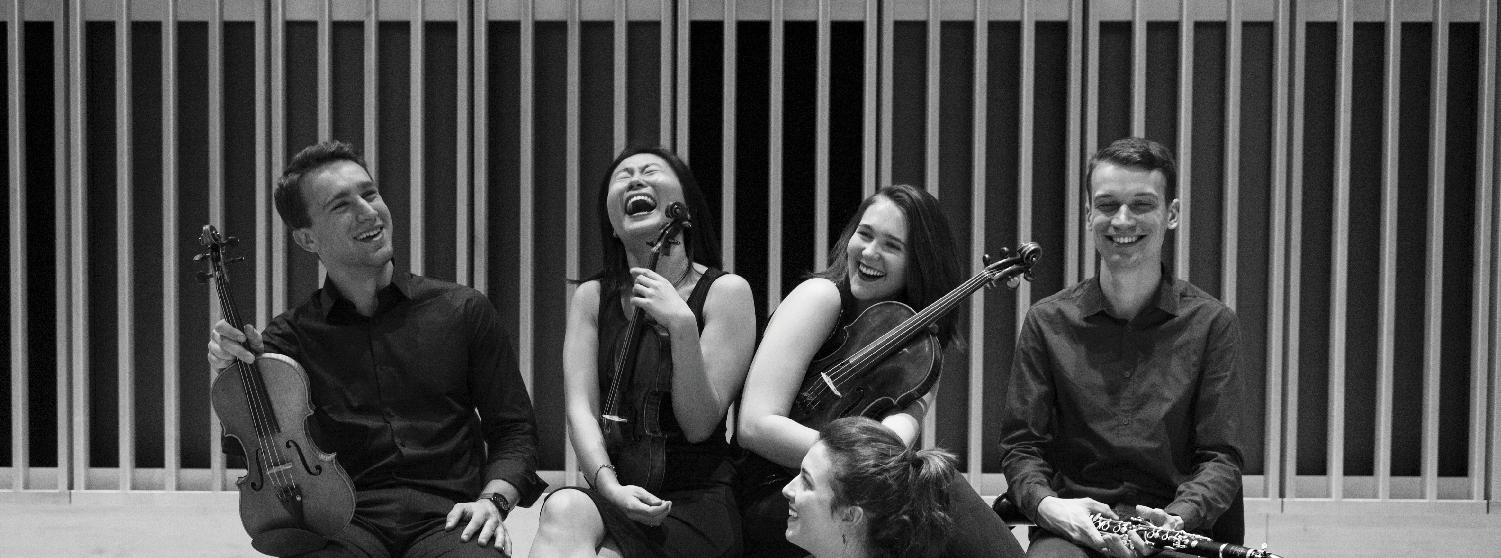

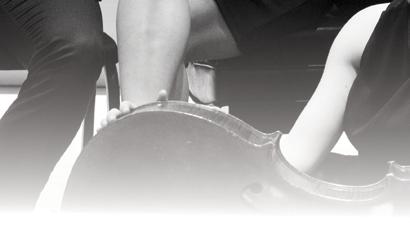











Whether listening to a masterful piece by one of the classical giants or a lead-edge work by a living composer, orchestral music invites you into a musically daring adventure filled with excitement or stillness, joy or sadness, or triumph or loss. Your main job is to listen and be affected by what you hear. Let the music provoke you and inspire you.
Here are a few tips to help you master the art of listening:
You've most likely heard people describe orchestral music as a relaxing escape or a perfect soundtrack to daily life. Truth is, if you listen closely, you'll hear more, notice more, and appreciate the artful message woven between the notes.
A composer is a partner in the creation of a concert. They provide the blueprint for the performance while the orchestra builds the house and adds the ornaments and furniture. With the freedom of interpretation, no single piece sounds the same.
Music is organized sound, filled with patterns, themes, and moods. Close your eyes and try to visualize what you hear. Do you see colors, shapes, characters or dancers, places, or locations? What is the story that is unfolding?
As you are listening, ask yourself the following questions:
1. What is the mood, feeling, or character of the music? Is it staying the same or changing?
2. Is the music loud or soft? Does it suddenly change?
3. Timbre: What instruments are sounding together? What new sounds are created by different combinations of instruments?
4. What is the tempo of the music? Can you feel the beat in your body?
5. Do you notice recurring themes that you heard previously?
6. What are the other instruments doing if they don’t have the melody?
7. Musical conversations: Do different instruments or sections call or respond to each other?

8. Rhythms and emphasis: How are the rhythms different or complimentary?
When you take the time to listen and enjoy it, you will always hear something new or different. You don't need to be a musician or an aficionado to enjoy an ESYO concert. All you need is an open ear and an open mind. Let the music affect you, visualize what you hear, and connect it to your life. Most importantly, give yourself a break from email, social media, texting, and screens. Let the music speak to you, especially if it challenges you to listen differently.






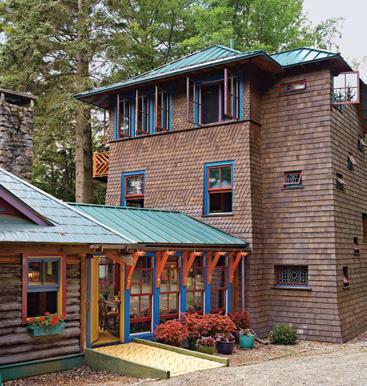



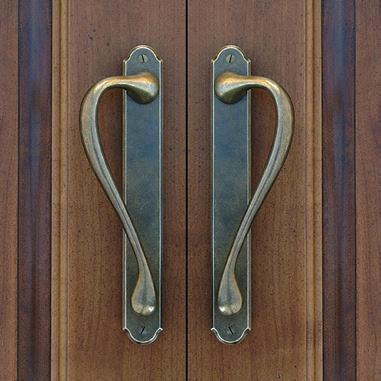

ESYO’s Young Leaders (YL) program provides opportunities for the next generation of musicians and arts leaders to gain hands-on experience and assist in the programs of an internationally-recognized youth orchestra. Young Leaders participate an average of 8-10 hours a month in a variety of ways, including professional development workshops and trainings; volunteering in special events, community projects, and administrative tasks; engaging as ESYO teaching assistants and ambassadors; and serving on ESYO's Board of Directors. Past student-led YL community projects have included an instrument and music supplies drive, volunteer music festival, outreach presentations in local schools, Soundwalk in Washington Park, and virtual collaborative music projects.


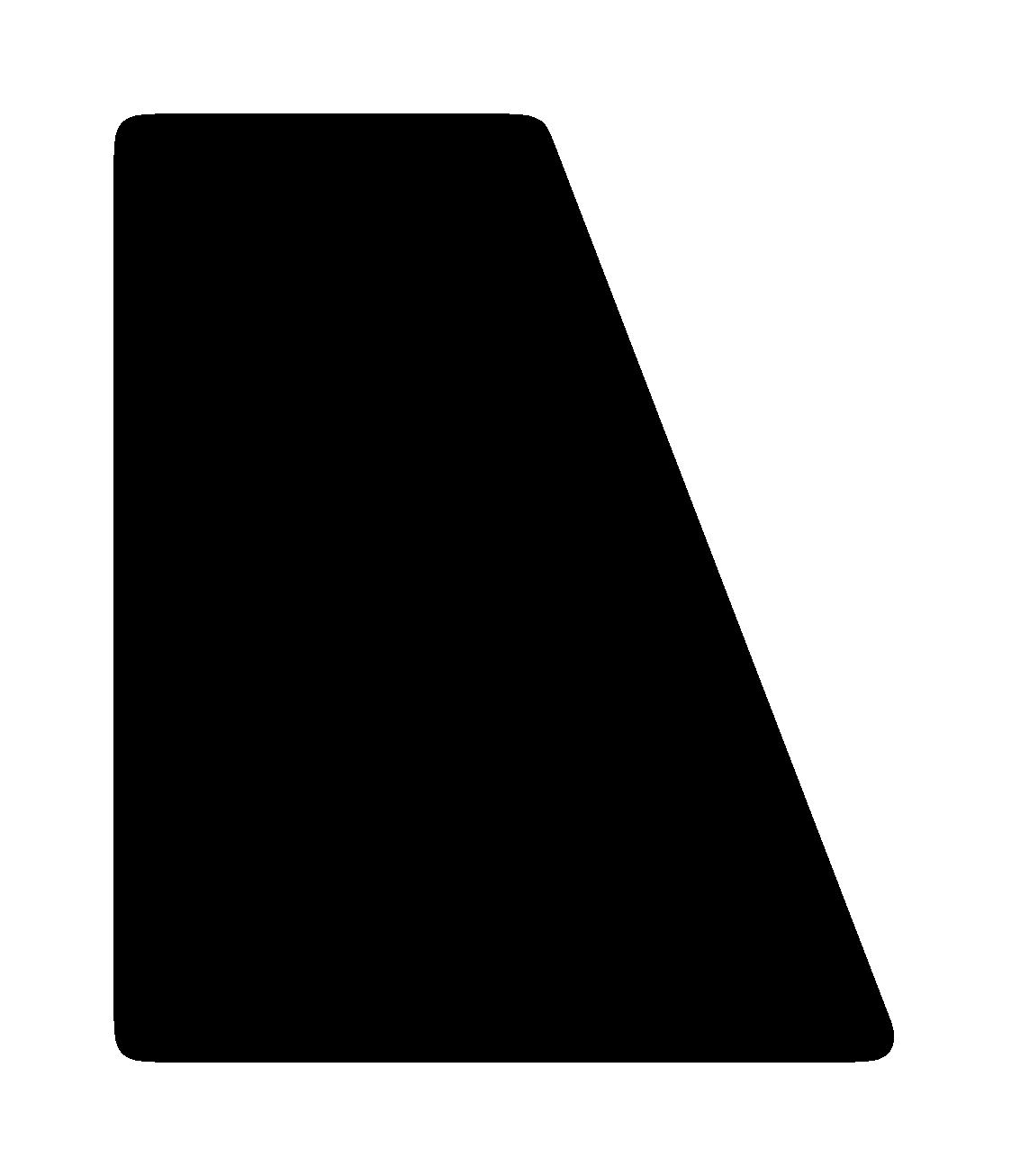


ESTABLISHED
This scholarship supports the musical aspirations of talented young players who demonstrate financial need. In recognition of the challenges faced by larger families to afford enriching opportunities for all their children equally, this award favors applicants seeking to enroll more than one child in Empire State Youth Orchestra.
ESTABLISHED
THE
These scholarships honor Richard Albagli’s more than thirty years of service to ESYO as percussion conductor, his deep commitment to music education and his compassion for others. These awards favor percussion applicants.
ESTABLISHED
This scholarship is awarded at the end of each ESYO season to a graduating senior from any ESYO group who best exemplifies the goals and standards of their ensemble, serves as a role model to their peers, has made outstanding musical contributions, and plans a career in music.
These needs-based scholarships honor Roger Hannay’s unwavering desire to help those in need who are also willing to help themselves. These awards favor returning ESYO musicians who have been accepted into a more advanced ensemble and who reflect Roger’s grit, determination and dedication to hard work.
Helen Cha-Pyo served as ESYO’s Music Director and Symphony Orchestra Conductor between 2002 and 2018. Under her extraordinary leadership, ESYO grew to become one of the preeminent Youth Orchestras in the nation. Helen’s vision guided the launch of ESYO’s CHIME in 2015 to provide a free, comprehensive music program for economically disadvantaged children, and her active community engagement sparked numerous collaborative projects both regionally and internationally. This award is given each spring to a senior who embodies Helen’s passionate commitment to music as a means to uplift and enrich the community.
This award is given each spring to a senior who embodies Helen’s passionate commitment to music as a means to uplift and enrich the community.
Additional scholarship funds were made possible through the generosity of donors in response to ESYO’s Annual Appeal.
If you are interested in more information about funding a named scholarship, please reach out to Anne-Marie Gorman Doyle at amgormandoyle@esyo.org.
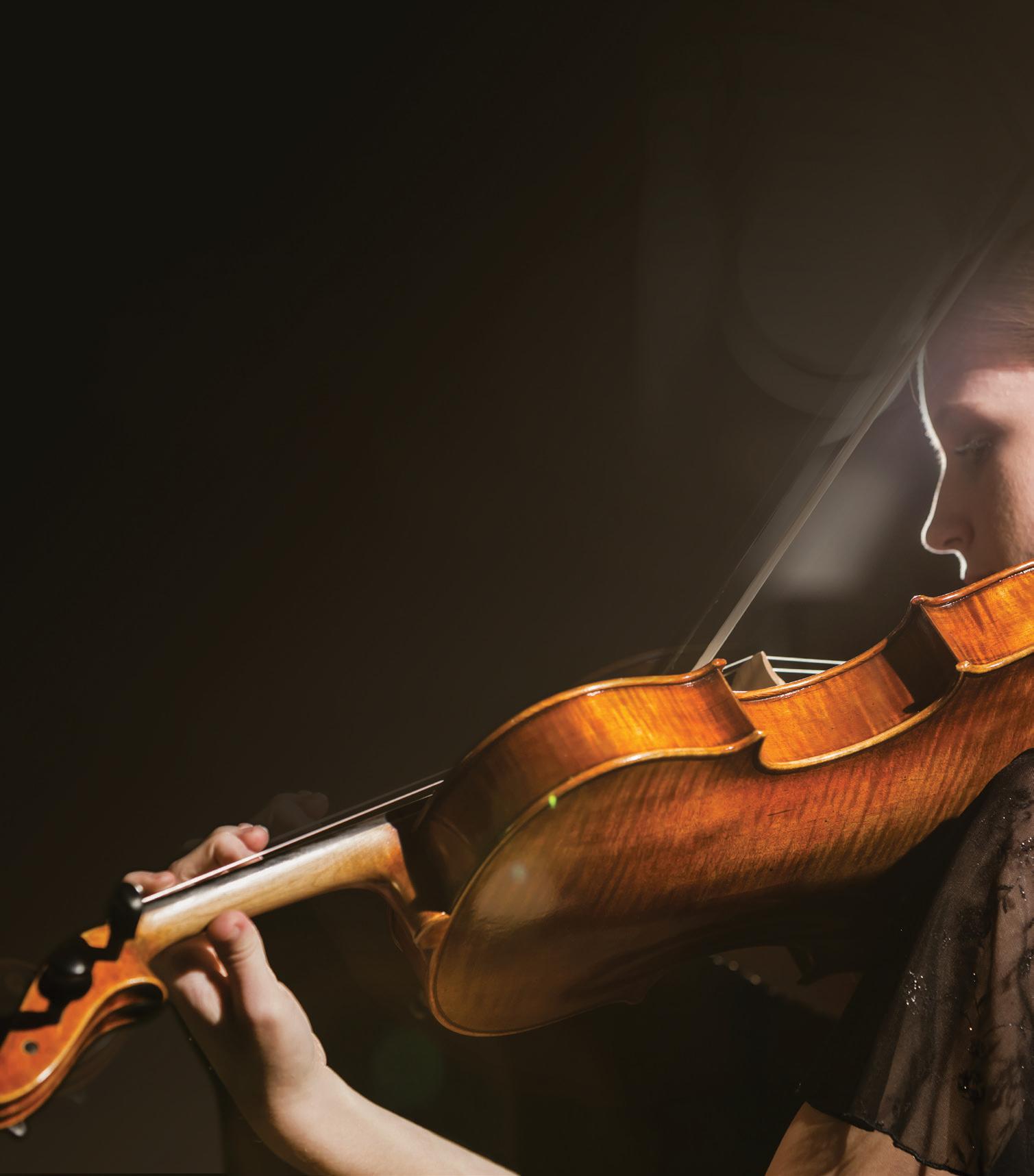



Monday Nov. 7th, 7:30 PM at Brown School - Percussion Ensembles
Sunday Nov. 13th, 3:00 PM at Troy Savings Bank Music Hall - Repertory Orchestra, String Orchestra, & Concertino Strings

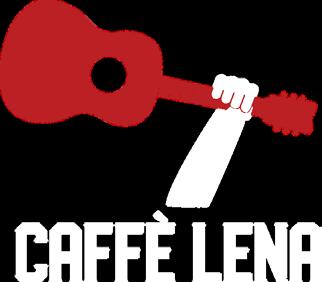
Sunday Nov. 20th, 3:00 PM at SUNY Schenectady Community College - Youth Jazz Orchestra & Repertory Jazz

Saturday Dec. 10th, 3:00 PM at College of Saint Rose - Wind Orchestra & Chamber Groups
Thursday Dec. 15th – Dec. 17th at 7:00 PM, Sunday Dec. 18th at 3:00 PM at ProctorsSymphony Orchestra & Melodies Chorale
Tuesday Dec. 20th, 7:30 PM at College of Saint Rose - Percussion Ensembles Holiday Concert
With Crane’s 7:1 student-to-faculty ratio, you’ll benefit from close relationships with world-class music professors

Crane's recent $29 million renovation offers state-of-the-art rehearsal rooms to master your instrument
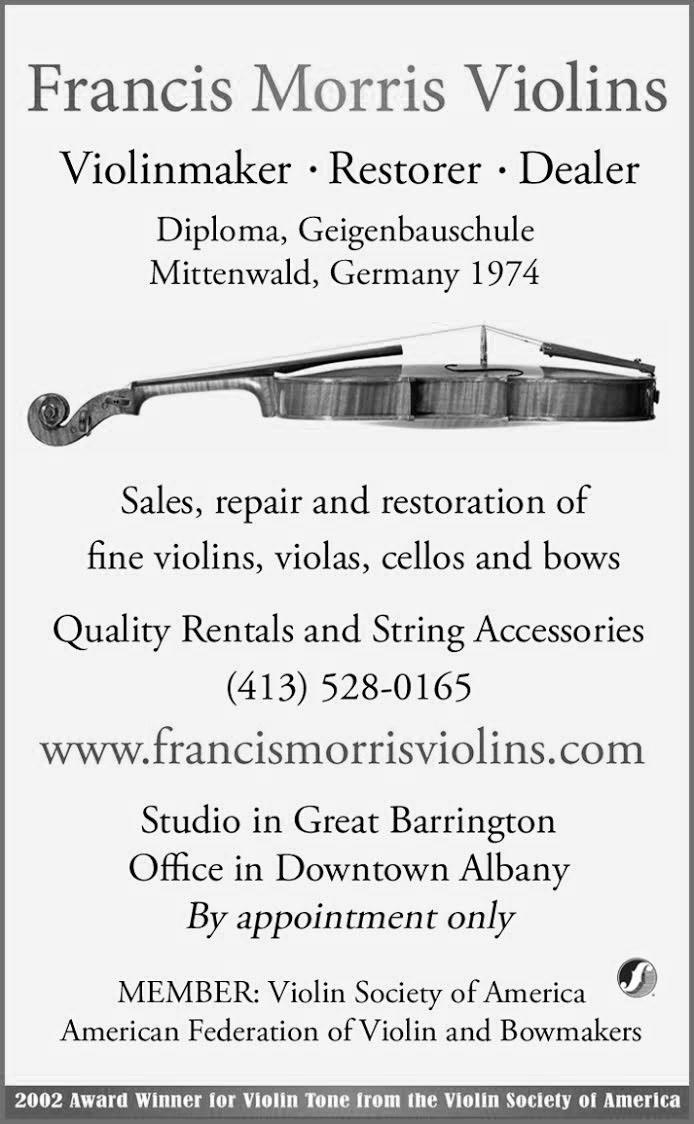
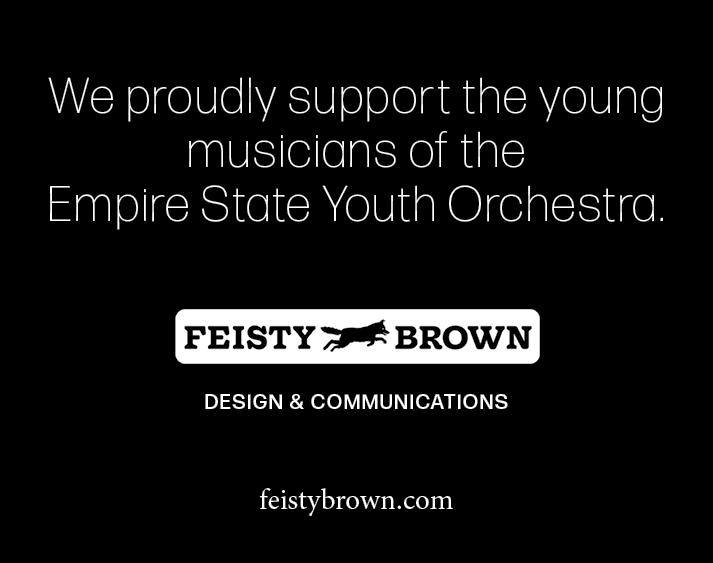
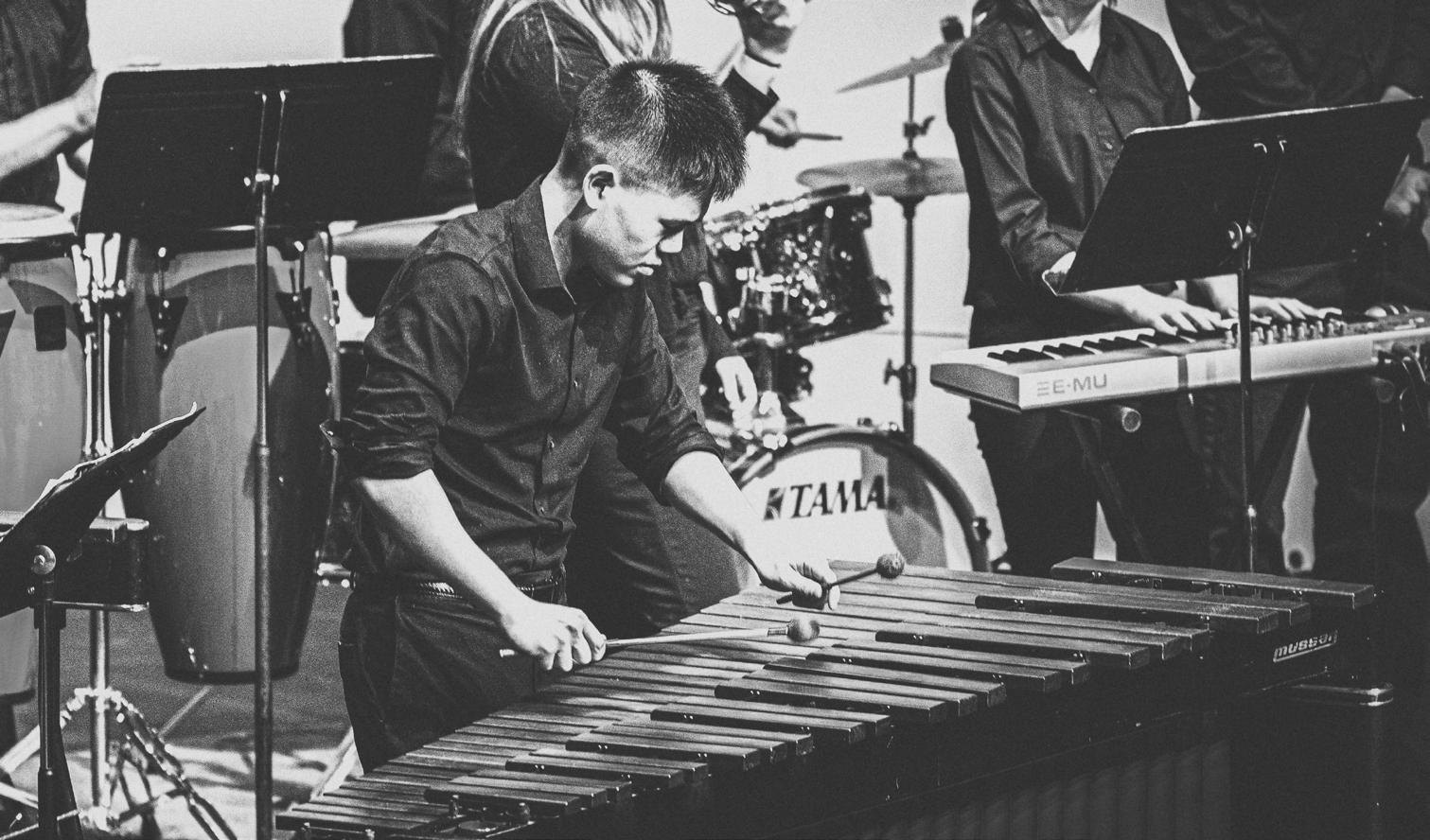
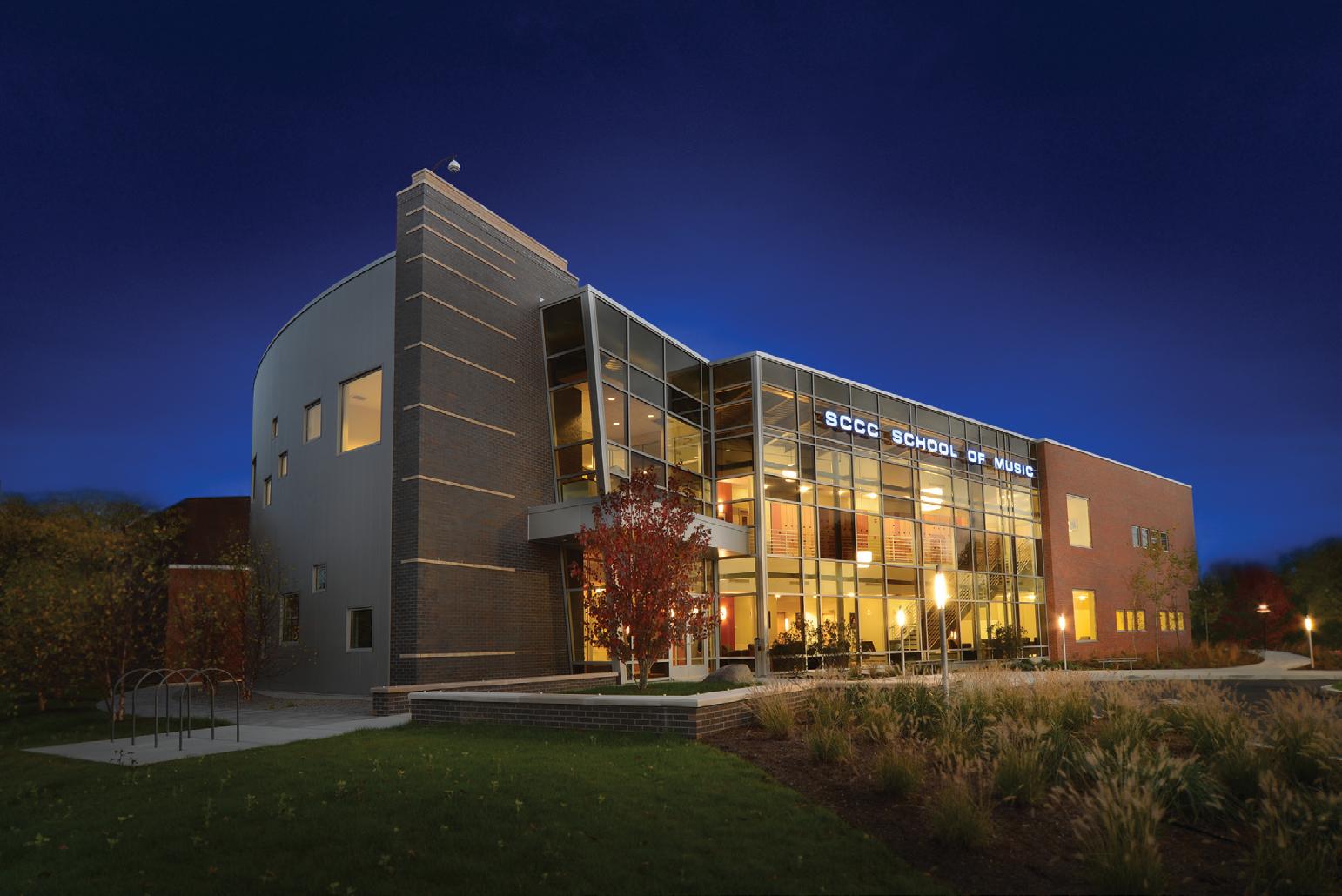
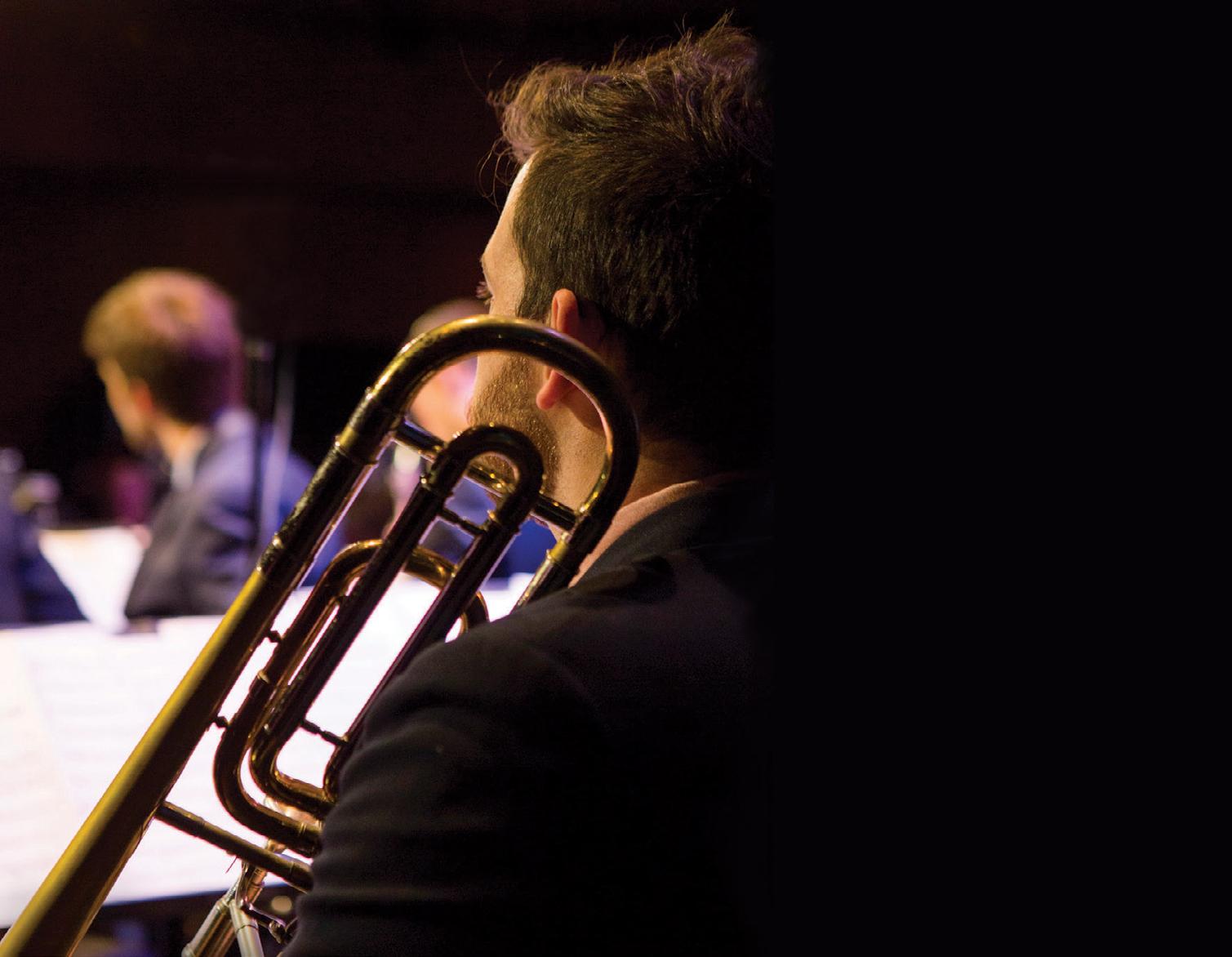
ACCESS ESYO is an online “pay what you can” ticketing system that empowers audiences to participate at a level they can afford while safeguarding individual integrity. We want our ESYO families, friends and supporters to enjoy our youth performances without undue financial hardship.
ACCESS ESYO allows for the purchase of concert tickets for as little as $1 per seat, and is sustained through an ongoing “pay it forward” campaign that invites donors to contribute the “gift of music” to our online ACCESS ESYO ticket bank.
ESYO has never turned away a qualified musician due to economic hardship and annually awards more than $30,000 in scholarships and tuition assistance. Now, we are taking steps to ensure that we never turn away an enthusiastic audience member for the same reason.
Please take advantage of ACCESS ESYO to bring your entire family to enjoy the outstanding performances of our youth musicians. Please give generously, if you are able, to ensure that our Ticket Bank remains solvent throughout the season!

1 2021
PARTNERS
$20,000 AND UP
Carnegie Hall Weill Institute
The Cornelia T. Bailey Foundation
New York State Council on the Arts with the support of the NY State Legislature
REA Charitable Trust
The Van Norton Family Foundation
$10,000 - $19,999
Albany Medical Center
The Belova Stetson Fund Bender Family Foundation
The McCarthy Charities M&T Charitable Foundation
The Review Foundation The Schenectady Foundation
Seymour Fox Memorial Foundation
The Times Union*
$5,000 - $9,999
BBL Construction Services
The Berkshire Bank Foundation
The Henry M. Butzel Family Foundation
Community Foundation for the Capital Region
Barry Alan Gold Memorial Advised Fund
Community Foundation for the Capital Region Patton Fund
D’Addario Music Foundation Sistema USA Presto Grant
$1,000 - $4,999
AYCO
Capital Bank A Division of Chemung Canal Trust Company
Capital District Physicians’ Health Plan Community Foundation for the Greater Capital Region
Community Foundation Red School House Fund Community Foundation for the Capital Region Foy Fund
Curtis Lumber GE Matching Gifts Program
Global Foundries Matching Gifts Program
Janney Montgomery Scott Richman
Network for Good Pearl Grant Richmans Price Chopper’s Golub Foundation Prudential Matching Gifts
Schenectady County Initiative Program
SEFA United Way The Stewart’s Foundation
Takeda Pharmaceuticals Matching Gifts
The University at Albany Foundation
$500 - $999 Apple Cap Com Federal Credit Union Cengage Learning Matching Gifts
Community Foundation for the Greater Capital Region Paul & Alane Hohenberg Fund Fenimore Asset Management The Foundation for Jewish Philanthropies Pioneer Bank Foundation WSP Foundation *Includes
($1,000 - $4,999)
Etienne Abelin
Kathleen & Richard Ahl
Robert & Patricia Altman
John & Beth Antonio*
Anastasia Arnold & Lee R. Boot
Al Aumick
Robert, Trish, & Griff Bengraff
Kurt Bratten
Marlene Brody
Robert E. Brown
Eric Bryson & Gina Falzarano
Charles & Charlotte Buchanan
Jon & Rebecca Calos
Bianca & Philip Carter
David Casper
Sarah Cavanaugh
Helen Cha-Pyo & Daniel Pyo
Heather Chan
Robert & Mary Chase in memory of Erica Chase-Salerno
Nicole Cherubini & Patrick Purcell
Paul & Mary Clyne
John Crable
Grace & Thomas Davitt
Patrick Doyle & Anne-Marie Gorman Doyle
Suzanne Erb & Andrew Bowd
Matie Flowers & Joe Visalli
James Fossett
James & Deborah Freis Robin Gold
Maureen Gorman & Alan Sykes
David & Patricia Gosda
John & Michelle Haller
Beverly Harrington
John & Harriet Hart
Walter Hayes & Jean Brand Hayes
E. Stewart Jones & Kimberly Sanger Jones
Kathryn Lake
Kevin Lau & Karen Tan
Peter & Lori Lauricella
Susan & Michael Maloney*
Charles & Debra McCambridge
Patty Michaelson & Walter Klisiwecz
Lee & Sharyn Miller
Paul D. Moore
Jagat & Jigisha Patel
Don & Lois Porter Scott Provancher & Teresa Hoelle
Thomas F. Read
Brian Sacawa
Christopher Shiley
Larry Shore
Elizabeth Silver Chang Sung & hang Byun
Liz & Noel Varghese Marjorie & Russ Ward Shu-lun & Dan Weinheimer
Omar Williams Rory & Bonnie Wood Rui Yang & Changlong Zhong Ellen Yu Vicky Yu & Zhiqiang Wang
Cherubini
Alex & Christina Dell
Celeste & Marc Dickie
Lynn & Marc Edgar
Thomas & Alison Enokian
Anthony & Lucille Esposito
Joanne & Jeffrey Gleba
Gareth Griffiths
Fred Hershey
Caitlin & Brendan Joyce Kristin Knickerbocker & Jeffrey Bak
Michael Kolodziej & Regina Resta
Jill & Ted Kostyniak
Beatrice Kovasznay*
Ellen Liu & Martin Yan Gaelen McCormick Thomas McNamara Joyce Michaelson
Craig Miller & Dalene DeHaney-Miller
William & Elizabeth Moll Kevin & Pat O'Bryan
Carlos Pesquera
Michael Range in memory of Sandrina Range Thomas & Evelyn Read
Herbert & Cynthia Shultz
Alan Smith
Christopher Sohn & Sara Wengert
Lucinda Strasenburgh Melissa Welch & Jason Kneaskern
Todd Wetzel
Ronghua Yu & We Zhang Li Zhang & Claire Liu Kathryn Zox
Joan & David Brown Ben & Sarah Chan Haijun Chen and Dawei Liu Barbara & Julian
Our music is challenging and exciting, and offers endless opportunities for growth! We know that you understand the benefits ESYO brings to the Capital Region, and we are asking for your support as we continue to offer great musical opportunities to every child who wants them. On average, our tuition covers just 40% of the actual cost of programming. Your donation supports musicians with financial constraints, and you are also supporting every ESYO musician. Your dollars allow us to continue providing amazing programming, master classes, teaching staff, touring and more. 57% of our contributions come from private donations from people like you. We quite literally cannot do it without you.


